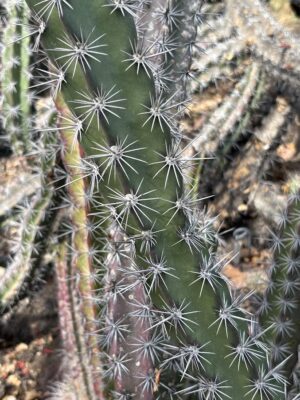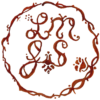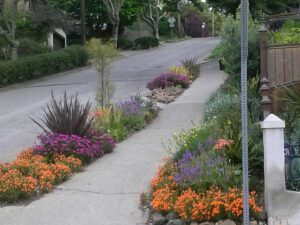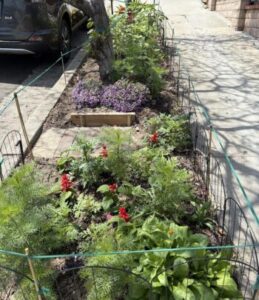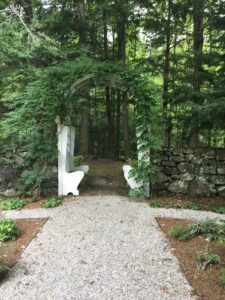Leaf Shapes, Variegations and Unusual Bark Patterns add Points of Interest in the Garden
Typical Landscaping can be quite boring. A patch of grass, a row of shrubs sheared into geometric shapes. Additionally there is a lack of color and no thought put into the eventual size of the plants. I would often looked for examples of interesting and inviting landscaping, as I drove to client’s homes for work. Missing was some texture and patterns plus color in the landscape.
Sad to say there weren’t a lot of good examples.
Adding height variation, plants with varied colors helps to layer the plantings. Also textures of leaves, and a few stand out plants or trees can greatly alter the lack luster average garden into an admirable landscape. Changing a garden from boring to one that you can enjoy. Neighbors and friends will appreciate the improvement too.
First some not so good landscape examples.
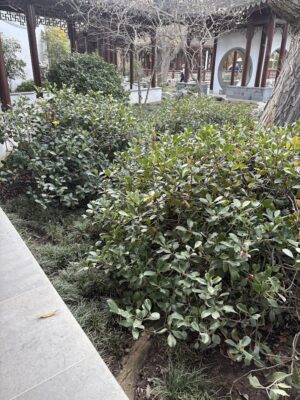
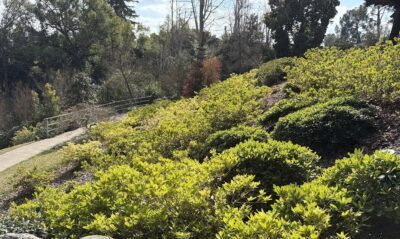
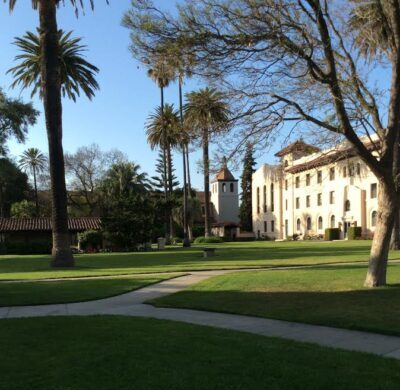
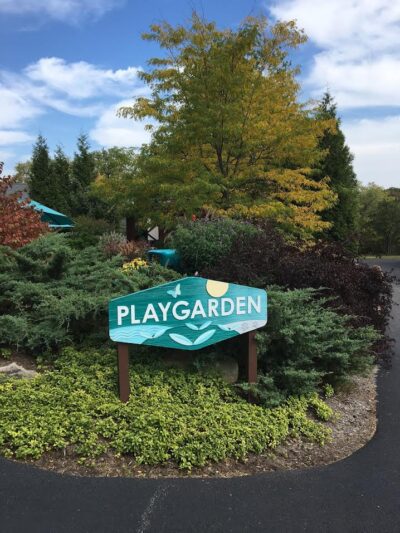
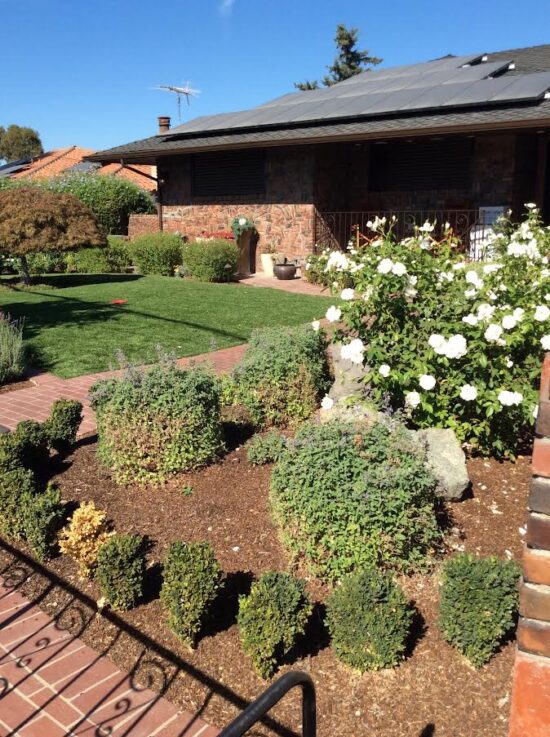
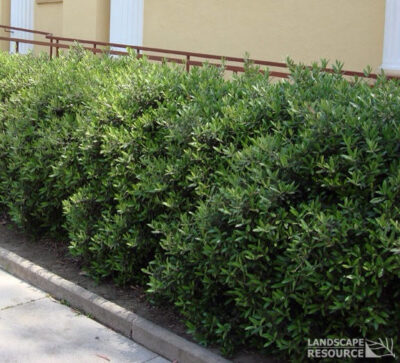
We have all seen landscaping like the areas pictured above. We see a lot of sad sheared shrubs, a sea of grass with plants pressed up against buildings, blocks of plantings with similar leaf shapes and all one height. And of course, Junipers trying to take over the area. There isn’t really anything bad about the shrubs themselves, their foliage is quite nice. It is just the lack of interest involved in their use and care.
Texture in the Garden
You often hear designer types, like myself, talk about texture. In the garden this usually means plants with varied leaf shapes or interesting leaves. And boy do I have some examples for you!
I recently walked the trails in Huntington Gardens (Los Angeles Area in California) and was inspired by the Cacti and Succulent Section and Jungle Section of the property, to write about pattern and texture. These are amazing examples, but may be a bit over the top for your garden or out of your climate zone- think of the photos as ideas to get inspiration from.
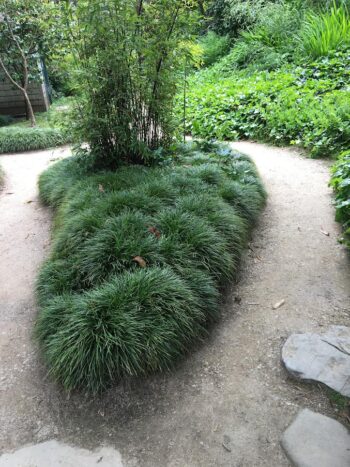
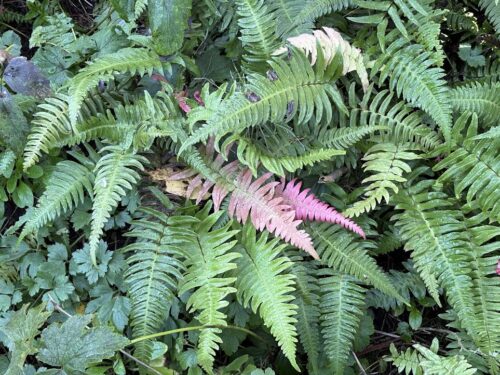
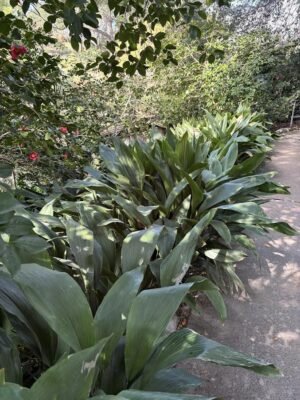
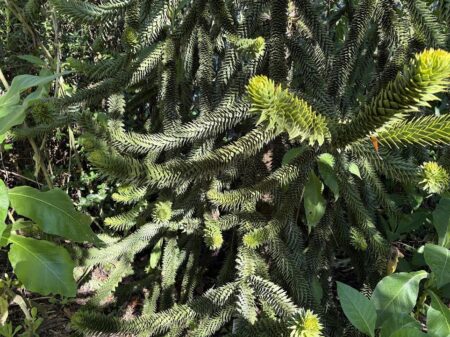
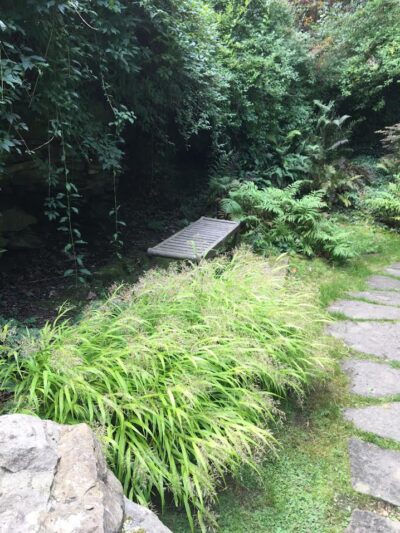

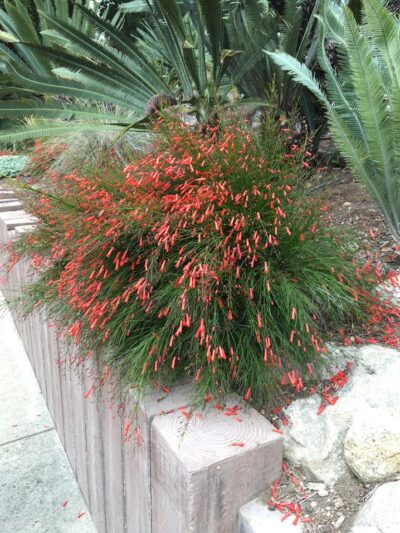

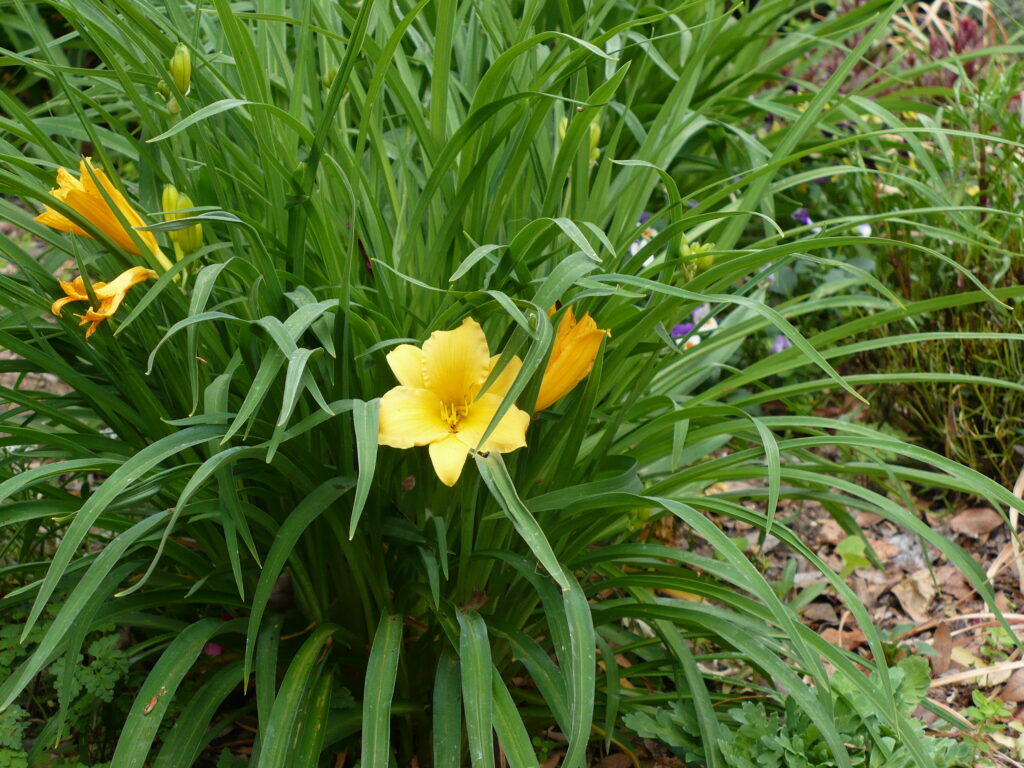
You can see how these plants with sword shaped leaves or fine foliage add to a planted border with predominantly oval leaves. They add a different “texture” to an area planted with shrubs and plants that all have a similar foliage type.

As an example, you can see the different foliage types in this perennial border. Plants with fine foliage or small leafed plants are combined with grassy or sword shaped leafed plants and plants with silver foliage. Even though the border is not blooming the different colors and shapes of the leaves are interesting.
Varied heights with low plants at the front and taller plants at the back also creates depth, allows one to view all the plants and flowers plus breaks up the monotony of all one height in the border.
Here are some examples of very bold, leaf shapes. Most of these are tropical plants, but plants with large leaves for harsher climates could be used instead i.e. Hydrangea or Oakleaf Hydrangea, Large leaf Magnolia, Calla Lilies, Canna Lilies, large ferns, Hosta etc………..
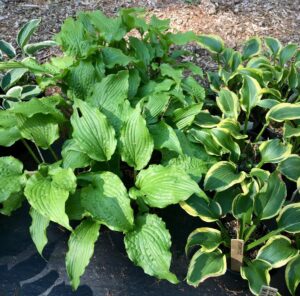
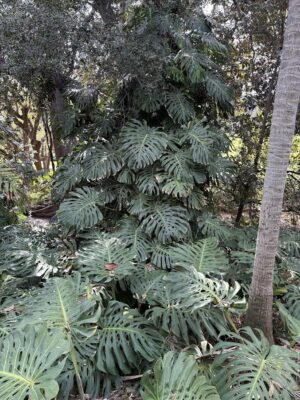
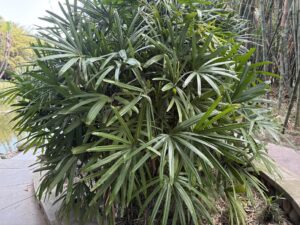
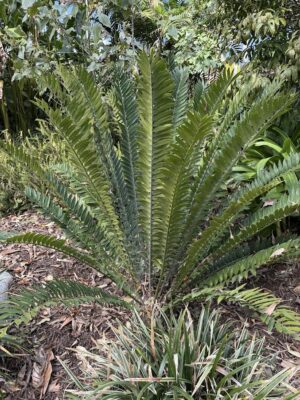
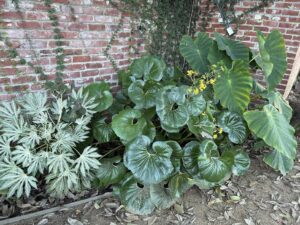

At the Botanical Gardens, plants with bold foliage are combined together to make a jungle effect, but in a home garden I would use one or two plants with big, bold foliage as accents. Plants with sword shaped leaves like the Aspidistra can be used in a small groups or in a border for a walk as shown. They make great potted plants too and work well in atriums. Typically, grassy plants like Agapanthus or Liriope are very commonly used for a texture change in landscaping.
Fine leafed grasses are a beautiful addition in the garden for their soft look. Not all Ornamental Grasses are well behaved though so be careful when choosing them- they can self seed and become invasive plus the seeds can get in doggies ears. Here is one I really like.
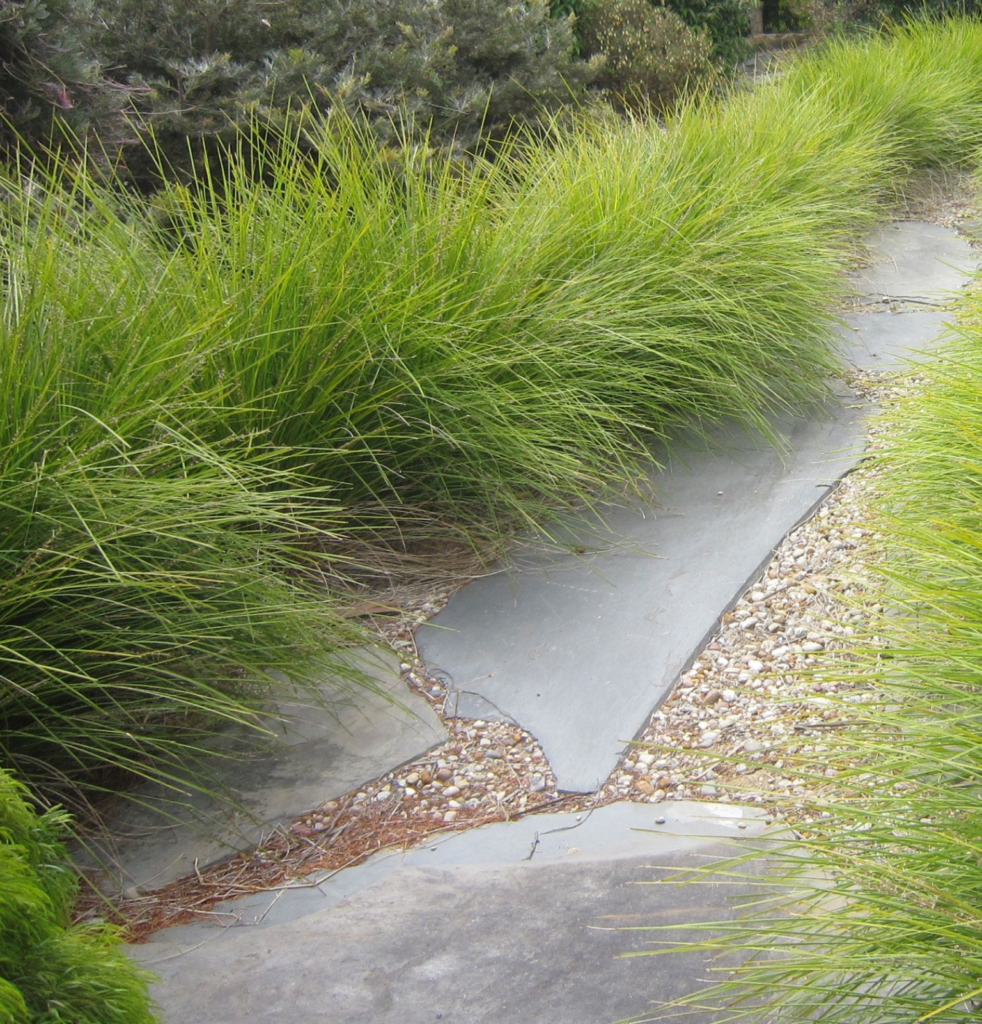
Patterns in Nature
Patterns in nature and landscaping usually comes in the form of interesting bark, variegated plants, flower and leaf shapes. Small leaves can be pretty foliage to view through or uplight at night. The same is true of trees with fan shapes or big leaves i.e. Palms and Big Bird of Paradise.
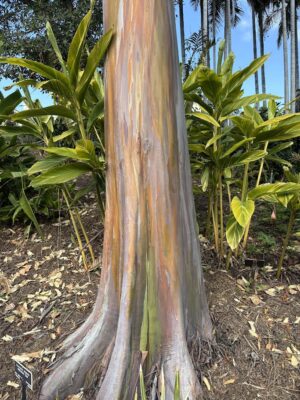
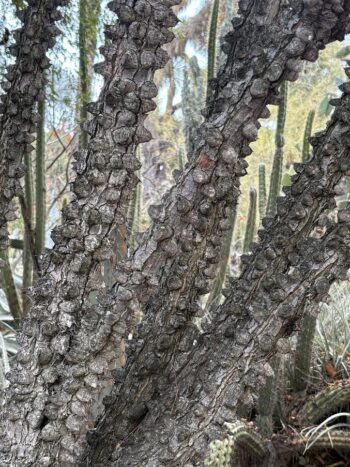

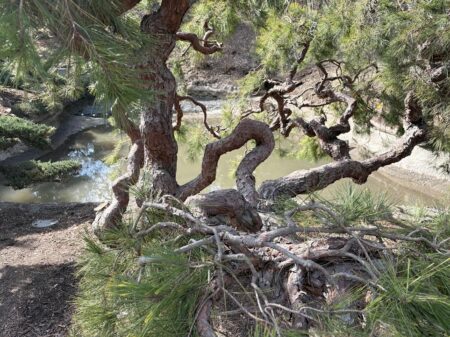
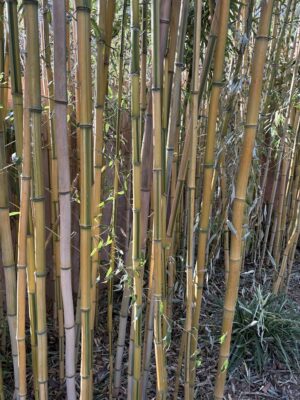
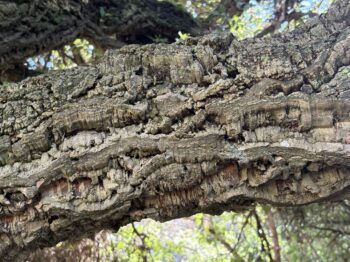
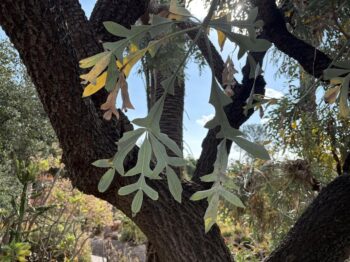
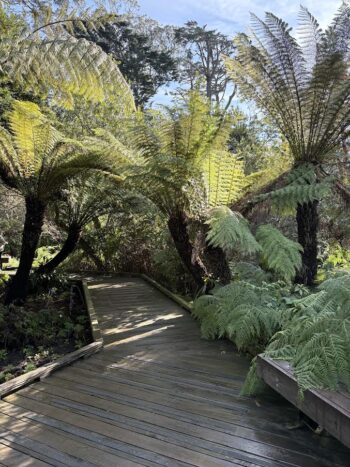
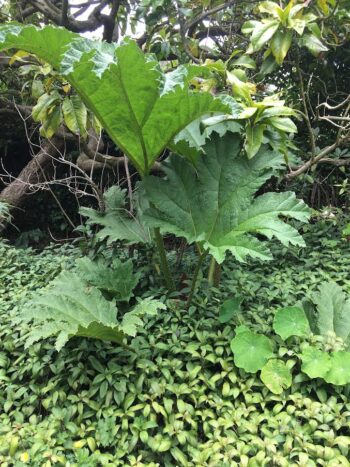
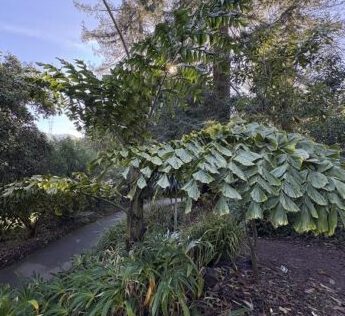
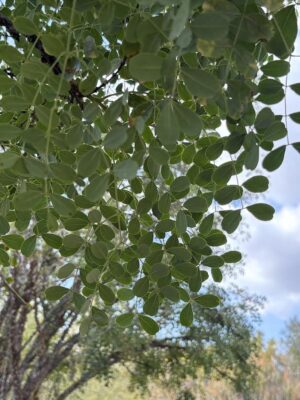
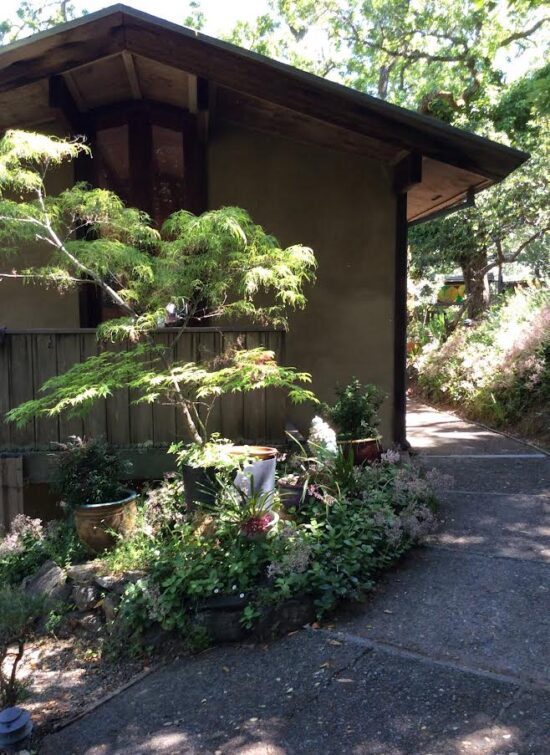

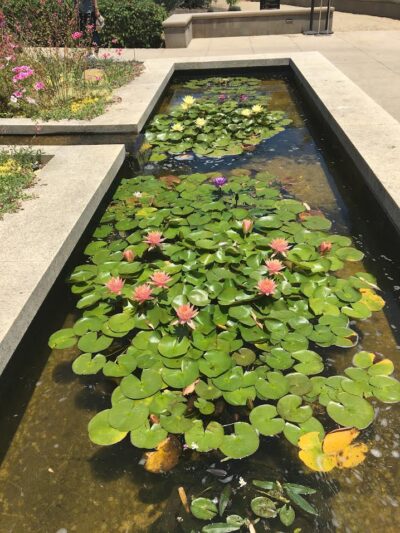
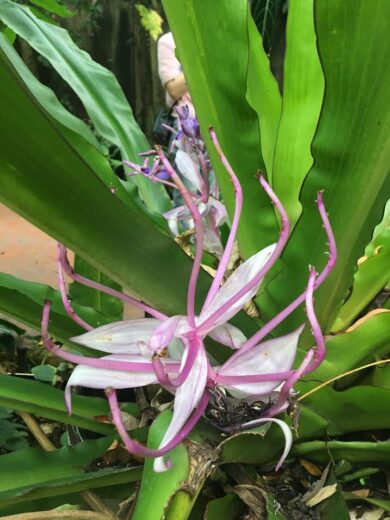

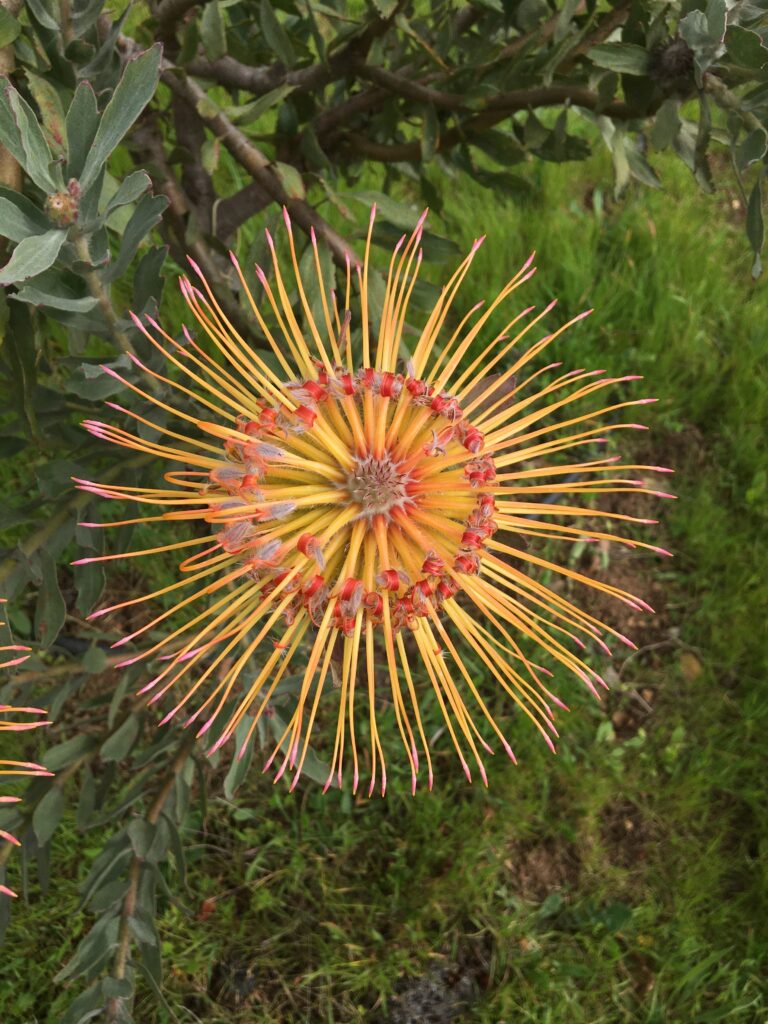
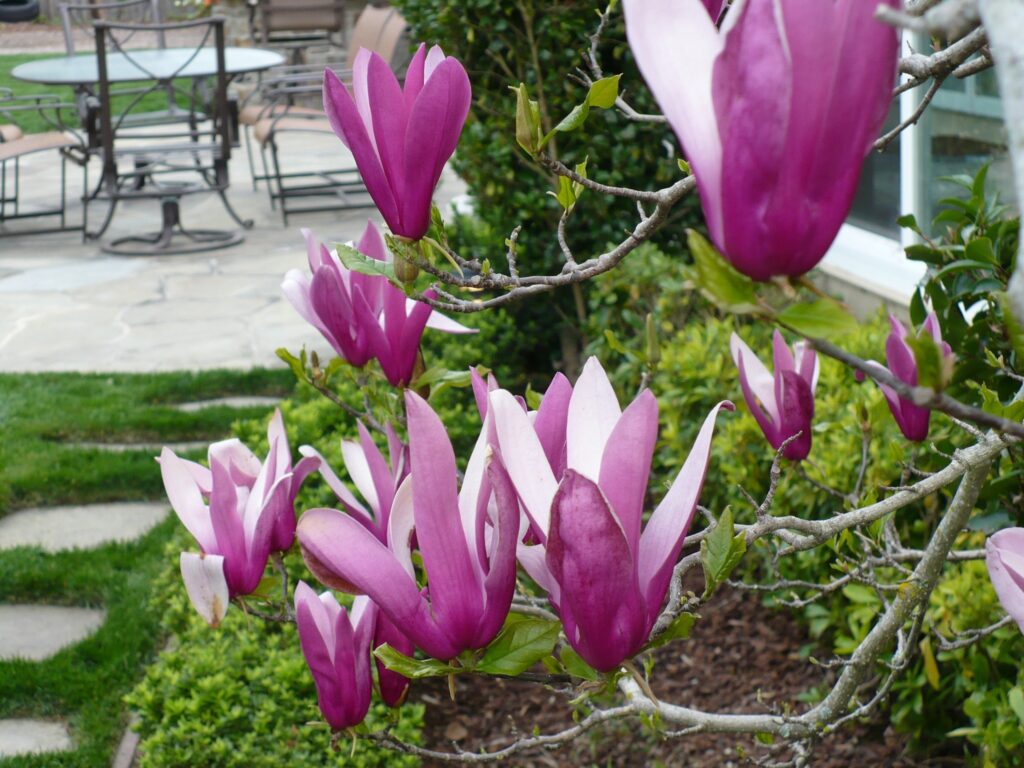

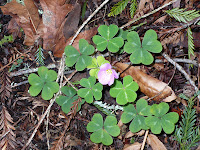


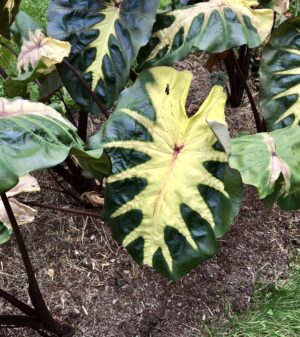

Seeing patterns in the garden or in nature can be just something you notice. The perfect little round leaves on the Button Fern fronds and how they are alternately lined up along the stalk descending from largest to smallest. Or the Bamboo stalks with their delineated sections and vertical poles, not lined up, but giving each other room. Or the deeply corrugated bark of the Cork Oak with its mountains and canyons carved into the bark by nature, like a relief map of the Sierra. These are patterns designed by nature.
Other patterns you will see are the product of design and hybridizing by man.
Hybrids from Nurseries
The Caladium leaves with two tones to add dramatic effect.
The Birch Allee planted to be enjoyed at different times of the day as you stroll below the canopy of the trees.
Or the starburst pattern of the Echinacea flowers with their carefully selected petal shape produced by hybridization.
Nurseries are full of an incredible array of hybrids demonstrating colorful leaf patterns, unusual flower shapes and intricate leaves.
Multiple Patterns In Trees
Plants and trees can have an artistic or architectural shape like the gorgeous Tree Ferns with their perfect umbrella canopy and furry trunk.
The lovely goblets at the tips of a Flowering Magnolia held aloft as on a platter.
Or the Brunnera leaves radiating out from the center, each lining up to catch the dappled light through the trees.
And then there is the Gunnera, common name of Dinosaur Food, bold and strange. Each leaf a whole canopy in itself.
Patterns in Shadows
Patterns may appear when you view up through the canopy of a tree or when the sun shines through the leaves making a shadow pattern on a wall like with the Japanese Maple leaves or the pretty foliage of the Caesalpinia.
Waterlilies have a vey nice pattern as they float on the water, as do their flowers. You can also see the shadow they cast on the pond or fountain floor and sometimes on the Koi.
Patterns are not always geometric in nature but chaotic or contorted as with the Bonsai Pine shown. This tree is a product of a gardener’s triumph over nature, but there are many beautiful shapes and forms in the trees making them an interesting study.
These are just a few example of Texture and Patterns in the Landscape and you will see many more I am sure.
In Conclusion
Landscape design seeks to create beautiful and well thought out areas for people to enjoy the outdoors. Designs should be practical and take into account the utilitarian aspects of an areas uses.
By bringing in the aesthetic considerations of good choices in Trees and plants for the garden, the outdoor spaces can be made more enjoyable and even surprising.
But don’t overdo it. Overplanting and overcrowding big, bold plants can add chaos not peace to your garden.
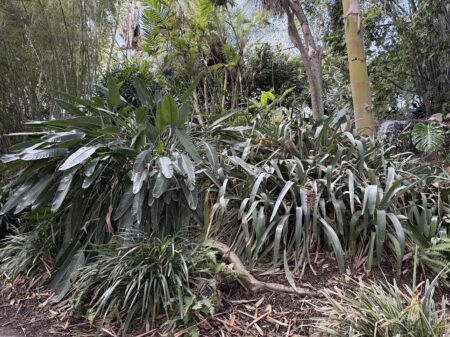
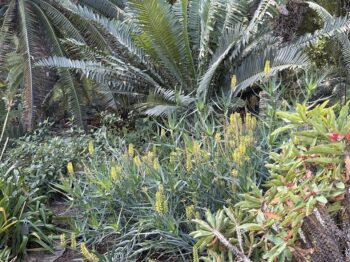
Nice plants here but too much! Its hard to focus on the individual plants and its kind of a jumble.
Some of this is just garden maintenance. Going in and thinning out the plantings, but mostly the gardener has gone from the opposite extreme from too boring to overwhelming. Probably okay in the Botanical Garden Jungle section but in your back garden it would not be inviting.
Suggestions for Home Gardens
At home, go ahead and use some typical screening shrubs i.e. Camellia japonica, Prunus caroliniana or Photinia fraseri at the back of your planted borders to give privacy, but break up the hedge with a few plants with a bold foliage.
Underplant the tall shrubs with Vinca minor or Dymondia, but add some groups of grassy leaved plants along the border i.e. mondo grass, daylilies, clivia. In addition, incorporate some interesting foliage plants like asparagus fern or small ferns, Japanese forest grass or Brunnera.
For color introduce some plants with flowers or colorful leaves (annual or perennial).
Finally consider a tree with attractive foliage, that casts light shade and is pretty uplighted i.e. Japanese Maple, Flowering Fruit Trees or the small Ginkgo Hybrids.
These are just quick examples to generate some ideas.
Any suggestion will need to be fitted to your light orientation and climate, but the important take away is to notice leaf shapes, colors, and patterns.
When looking at trees consider the view up into the canopy as well as the view from the house. Branch out into unusual looking plants to give interest points in the garden. Visit the public gardens near you for good examples that are well established and read up on the plants you are considering.
My Website Gallery has some nice examples
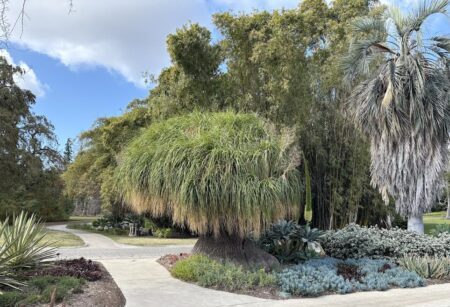
Lots of texture here! But it is neat and seems to fit together well. Your home landscaping isn’t a Botanical Garden but it is certainly worth bringing a few ideas home from these fabulous places. Enjoy!
